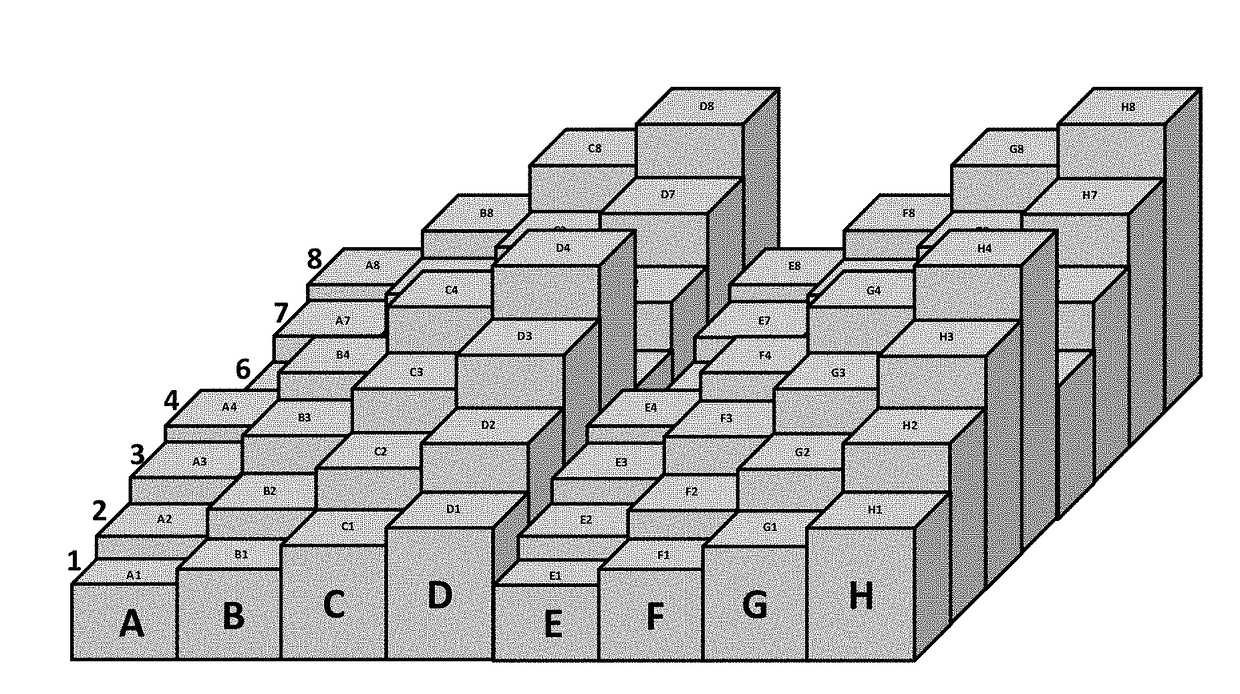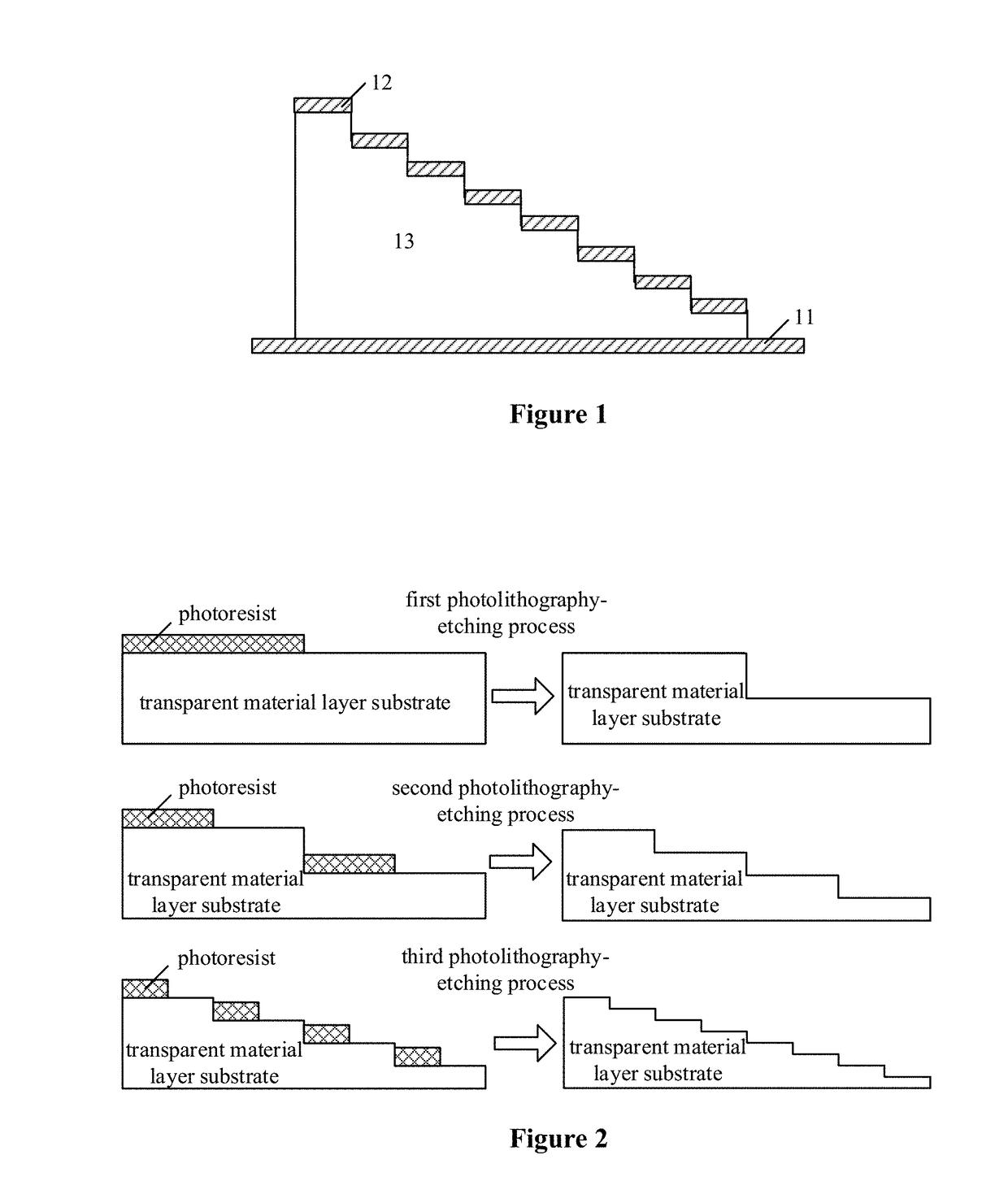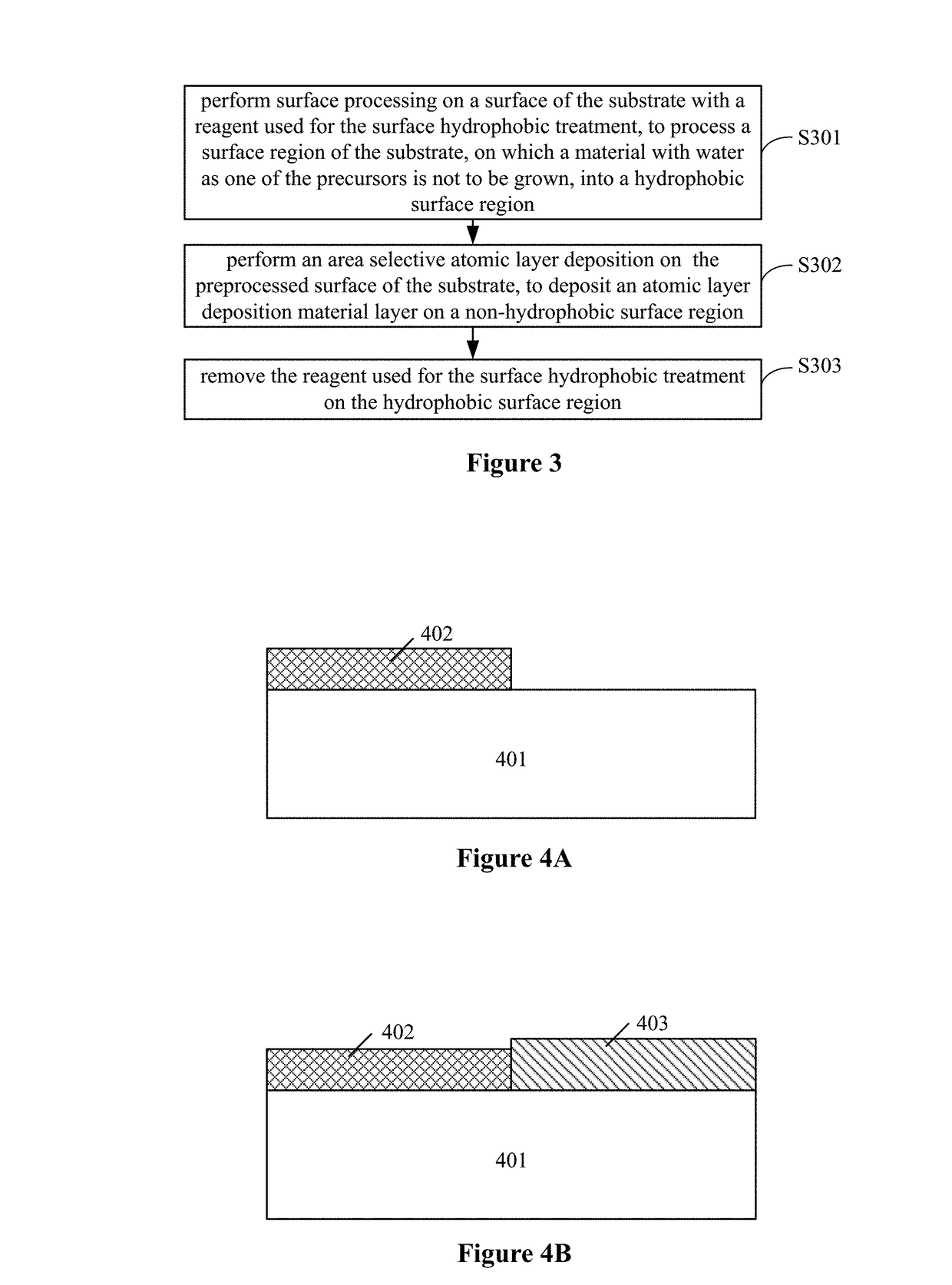Method of monolithic integration of hyperspectral image sensor
a monolithic integration and image sensor technology, applied in the field of hyperspectral imaging, can solve the problems of slow analysis speed, increased non-uniformity, and high cost, and achieve excellent deposition uniformity, reduce device failure rate, and increase yield
- Summary
- Abstract
- Description
- Claims
- Application Information
AI Technical Summary
Benefits of technology
Problems solved by technology
Method used
Image
Examples
Embodiment Construction
[0036]The embodiments according to the present disclosure are described in detail in conjunction with the drawings hereinafter, so that the object, technical solutions and technical effects of the present disclosure can be understood clearly.
[0037]Before the embodiments according to the present disclosure are described, an area selective atomic layer deposition (Area Selective Atomic Layer Deposition, abbreviated as ASALD) process is introduced first.
[0038]The area selective atomic layer deposition process is a kind of atomic layer deposition process on selected surface where water is one of the precursors.
[0039]A material grown with water as one of the precursors generally grows well only on hydrophilic surfaces. In addition, the material grown with water as one of the precursors grows differently on different hydrophobic surfaces. The greater the hydrophobicity of a surface is, the higher the density of a hydrophobic material is, it is more difficult to grow the material with wate...
PUM
 Login to View More
Login to View More Abstract
Description
Claims
Application Information
 Login to View More
Login to View More - R&D
- Intellectual Property
- Life Sciences
- Materials
- Tech Scout
- Unparalleled Data Quality
- Higher Quality Content
- 60% Fewer Hallucinations
Browse by: Latest US Patents, China's latest patents, Technical Efficacy Thesaurus, Application Domain, Technology Topic, Popular Technical Reports.
© 2025 PatSnap. All rights reserved.Legal|Privacy policy|Modern Slavery Act Transparency Statement|Sitemap|About US| Contact US: help@patsnap.com



